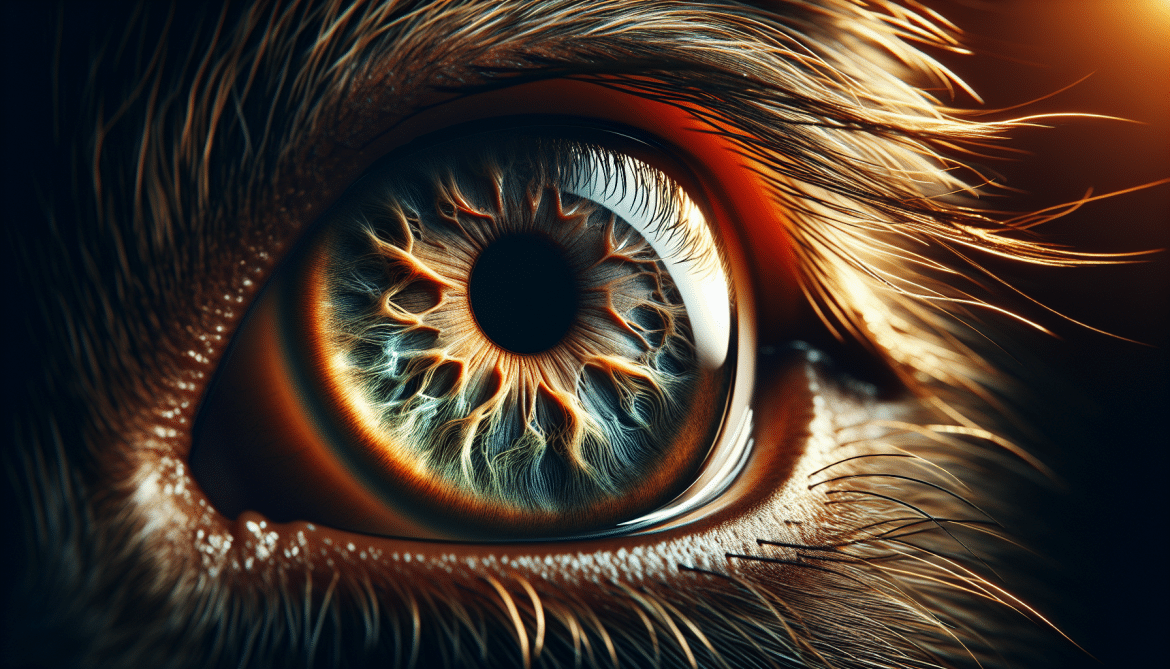In "Common Eye Health Issues in Dogs: Understanding and Managing them," this article provides valuable insight into the various eye health issues that dogs can encounter and offers guidance on how to effectively manage them. From common conditions such as conjunctivitis and dry eye to more serious concerns like cataracts and glaucoma, understanding the signs and symptoms can greatly contribute to proactively caring for your furry friend's visual well-being. Discover practical tips and expert advice to ensure your dog's eyes stay healthy and happy for years to come.
Common Eye Health Issues in Dogs
As a dog owner, it is essential to ensure the overall health and well-being of your furry friend. While you might focus on their diet, exercise, and grooming, it's important not to overlook their eye health. Dogs can suffer from a variety of eye health issues, ranging from mild irritations to serious conditions that can lead to vision loss. In this article, we will explore the common eye health issues that dogs can experience, their causes, signs and symptoms to watch out for, diagnosis and treatment options, as well as preventive measures.

This image is property of images.pexels.com.
Causes of Eye Health Issues in Dogs
There are several factors that can contribute to eye health issues in dogs. One of the most common causes is genetics. Certain breeds are more prone to specific eye conditions due to their genetics, such as Poodles and Cocker Spaniels being predisposed to cataracts. Other causes can include environmental factors, infections, trauma, allergies, or underlying health conditions, such as diabetes or autoimmune disorders. It's important to be aware of these potential causes and take steps to minimize their impact on your dog's eye health.
Signs and Symptoms
Detecting eye health issues in dogs can sometimes be challenging, as they may not always exhibit obvious signs of discomfort. However, there are a few key signs and symptoms to watch out for. These can include redness or swelling of the eye, excessive tearing or discharge, squinting or blinking more than usual, cloudiness or a change in the color of the eye, pawing at the eye, or a noticeable change in their behavior or vision. If you notice any of these signs, it's crucial to consult a veterinarian for a proper diagnosis and treatment.
Diagnosing Eye Health Issues
When it comes to diagnosing eye health issues in dogs, a thorough examination by a veterinarian is essential. The veterinarian will perform various tests, including a visual inspection, measuring tear production, and checking for any abnormalities in the eye structures. They may also use specialized equipment, such as a tonometer to measure intraocular pressure, or recommend further diagnostic procedures like blood tests or imaging studies. Accurate diagnosis is crucial for determining the appropriate treatment plan.
Common Diseases and Conditions
Let's explore some of the most common eye diseases and conditions that dogs may experience:

This image is property of images.pexels.com.
1. Conjunctivitis
Conjunctivitis, also known as pink eye, is a common eye condition in dogs. It occurs when the conjunctiva, the thin tissue lining the eyelids and covering the front part of the eye, becomes inflamed. Conjunctivitis can be caused by allergies, infections, irritants, or foreign objects in the eye. Dogs with conjunctivitis may display symptoms such as redness, discharge, swelling, and excessive blinking. This condition can usually be treated with medicated eye drops or ointments prescribed by a veterinarian.
2. Keratoconjunctivitis Sicca
Keratoconjunctivitis Sicca, commonly known as dry eye, is a condition that occurs when there is a lack of tear production or poor quality tears in dogs. Tears are essential for maintaining the health of the cornea and preventing infections. Dry eye can cause discomfort, redness, discharge, and even corneal ulcers if left untreated. Treatment for keratoconjunctivitis Sicca usually involves the use of artificial tears or medication to stimulate tear production.

This image is property of images.pexels.com.
3. Corneal Ulcers
Corneal ulcers are open sores on the cornea, the transparent front part of the eye. They can occur due to trauma, foreign objects, infections, or lack of tear production. Corneal ulcers can be quite painful for dogs and may cause symptoms such as redness, squinting, excessive tearing, and sensitivity to light. Treatment typically involves medication to promote healing and prevent infection, along with protective measures like the use of an Elizabethan collar to prevent rubbing.
4. Glaucoma
Glaucoma is a serious eye condition that occurs when there is increased pressure within the eye, leading to damage to the optic nerve and loss of vision. In dogs, glaucoma can be either primary (hereditary) or secondary (resulting from other eye conditions or diseases). Symptoms of glaucoma include redness, pain, cloudiness, dilated pupils, and vision loss. Immediate veterinary attention is necessary as prompt treatment can help manage the condition and prevent further vision loss.
5. Cataracts
Cataracts result in the clouding of the lens in the eye, leading to blurry vision or even complete vision loss. They can be caused by genetics, old age, diabetes, or trauma. While cataracts are a common eye health issue in senior dogs, they can also affect younger dogs due to genetic predisposition. Surgery is often the most effective treatment for cataracts, especially if they impair a dog's vision significantly.
6. Retinal Diseases
Retinal diseases, such as Progressive Retinal Atrophy (PRA), can cause degeneration of the retinal cells, resulting in vision loss over time. PRA is an inherited condition that affects many different dog breeds. In the early stages, dogs may have difficulty seeing in dim light or at night, and as the disease progresses, they may eventually lose their vision entirely. Unfortunately, there is no cure for PRA, but there are management strategies available to help affected dogs adapt to their vision loss.
7. Entropion and Ectropion
Entropion and ectropion are eyelid conditions that can affect dogs. Entropion occurs when the eyelid rolls inward, causing the eyelashes to rub against the cornea, resulting in irritation and potential corneal ulcers. Ectropion, on the other hand, is when the eyelid droops outward, leaving the eye exposed and prone to dryness and irritation. Both conditions can be congenital or acquired, and surgical correction is often necessary to alleviate the discomfort and protect the eye.
8. Cherry Eye
Cherry eye is a condition where the tear gland in the third eyelid becomes enlarged and protrudes from the corner of the eye, resembling a cherry. It can occur spontaneously or due to trauma. While it is not typically painful, it can cause irritation and potential complications if left untreated. Surgical intervention is usually required to address cherry eye and prevent further issues.
9. Eyelid Tumors
Eyelid tumors can occur in dogs, and while they may not always be cancerous, they can still pose a risk to eye health and vision. Tumors on the eyelids can cause symptoms such as swelling, redness, discharge, or changes in the shape or appearance of the eyelid. Prompt medical intervention is crucial to determine the nature of the tumor and provide appropriate treatment, which may involve surgery or other forms of therapy.
Management and Treatment
The management and treatment of eye health issues in dogs depend on the specific condition and its severity. In many cases, medication in the form of eye drops or ointments may be prescribed to alleviate symptoms, reduce inflammation, or prevent infections. Surgical intervention may be necessary for conditions like glaucoma, cataracts, entropion, or eyelid tumors. It's important to follow your veterinarian's recommendations and attend regular check-ups to monitor the progress and adjust the treatment plan if needed.
Preventive Measures
While certain eye health issues in dogs cannot be completely prevented, there are measures you can take to minimize the risks. Regularly cleaning your dog's eyes with a gentle, veterinarian-recommended eye wash can help remove debris and prevent the build-up of bacteria. Protecting your dog's eyes from potential hazards, such as sharp objects or chemicals, can also reduce the risk of injuries. Additionally, maintaining your dog's overall health and providing a balanced diet can contribute to their overall eye health.
When to Consult a Veterinarian
If you notice any signs of discomfort or changes in your dog's eyes, it's crucial to consult a veterinarian promptly. They can conduct a thorough examination, make an accurate diagnosis, and recommend the most appropriate treatment for your dog's specific eye health issue. Remember, early detection and intervention can significantly improve the prognosis and quality of life for your beloved furry friend.
By prioritizing your dog's eye health, understanding common issues, and seeking professional veterinary care when needed, you can help ensure that your four-legged companion enjoys a lifetime of clear vision and optimal eye health.


